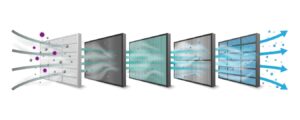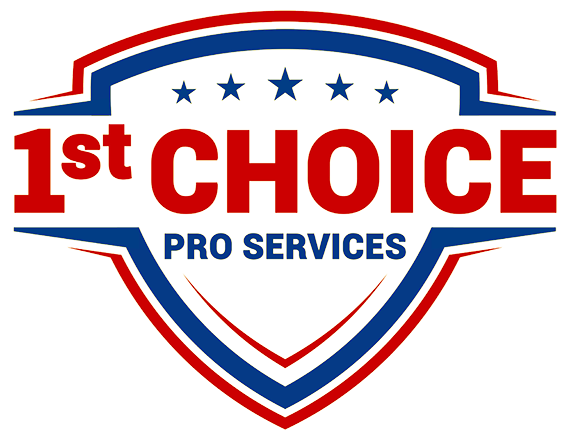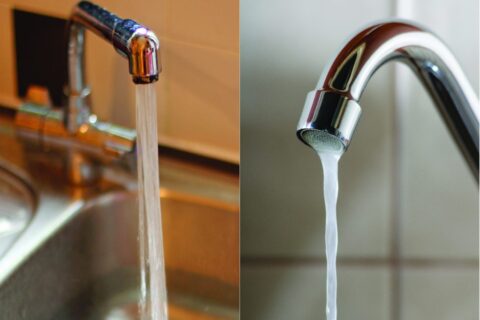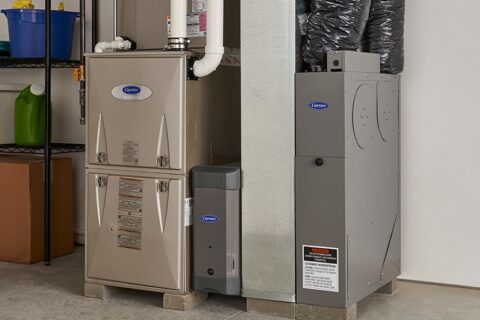Advanced Air Filtration Technologies Explained
Key Takeaways
-
Hopeful air filtration technologies such as HEPA, MERV 13, and MERV 14 are far more effective than the typical MERV system.
-
There are several types of advanced air filters, including HEPA, activated carbon, and UV-C light filters, each with their benefits.
-
These filtration systems can drastically reduce airborne pollutants, allergens, and pathogens in indoor spaces.
-
For the best air filtration, it’s important to choose based on specific needs — whether it’s allergy prevention or pathogen control.
-
Regular maintenance and proper installation are key to ensuring that any air filtration system operates effectively.
-
Investing in advanced air filtration can promote better health and well-being.
Did you know that most air filters only catch 30% of harmful particles? In our drive for clean air, we need to go deeper. Beyond MERV ratings, advanced tech for air filtration is here to help change the game.
We’re talking about stuff like UV lights and HEPA filters. They don’t just trap dust; they zap germs and clear the air of nasties. It’s good to know that these tech marvels boost health and well-being.
How do you choose the right one for you? Consider your space, your needs, and your budget. You don’t need a science degree to figure it out. We’re going to break it down while keeping it real and simple.
Learn more about high-quality air filtration and transform your home into a sanctuary.
Understanding Air Filtration Technologies
Getting into the world of active air filtration systems is like diving into an ocean of science and innovation. These systems actively fend off annoying pollutants, allergens, and even some pathogens, ensuring our indoor air quality remains fresh and clean. Active air purification technologies enhance the effectiveness of filtration, allowing for better management of airborne contaminants.
Picking the right system can be tricky, though. It’s crucial to match the right air filter performance with the specific environment. Just like plants that thrive under specific conditions, each filter, whether it’s a HEPA filter or a carbon filter, has its perfect setting to optimize purification.
Technology is moving so quickly, and all of this means that air filtration has evolved beyond antiquated methods. We now have advanced air purification capabilities that provide smarter, more efficient solutions to improve indoor air quality challenges.
What Are Air Filtration Technologies
Air filtration technology isn’t one-size-fits-all. From the good ol’ HEPA filters to newer innovations like active air filtration systems and ionizers, each has its sweet spot. Understanding how these active air purification technologies work allows for more informed decisions regarding indoor air quality solutions.
For example, true HEPA filters excel at trapping super-tiny particles, but they may not effectively eliminate odors or harmful gases. This highlights the importance of incorporating active filtration systems alongside passive air filtration technologies to tackle various airborne contaminants.
By grasping these mechanisms, you can tailor solutions that effectively cut down on airborne nasties. Utilizing advanced air purification capabilities can lead to a comprehensive air quality management system, ensuring a healthier indoor environment.
Some popular air filtration technologies include UV air purifiers and advanced photocatalysis, which enhance air purification. Integrating these systems can significantly improve air filter performance and contribute to better indoor air quality.
-
HEPA filters capture at least 99.97% of particles as small as 0.3 microns.
-
Go a step further, snagging even tinier particles.
-
Ionizers: Charge particles to clump them together for removal.
-
Activated Carbon: Absorbs gases and odors, complementing HEPA filters.
Active vs Passive Filtration Methods
When it comes to air filtration, there are two main types: active and passive systems. Active systems are like your pushy friend who gets stuff done. They utilize technology to clean the air by zapping contaminants with the help of ionizers or UV light.
These active systems are excellent for hectic environments or when you want a deep clean. On the other hand, passive systems, such as HEPA filters, take a different approach. They sit back and let air pass through, effectively trapping particles as they go.
While passive systems are champs at capturing particles, they might need a little extra help for gases or odors. Understanding the differences between these two types can help you choose the right air filtration system for your needs.
Comparison of Active vs Passive Filtration:
|
Method |
Description |
Pros |
Cons |
|---|---|---|---|
|
Active |
Uses tech to enhance purification |
Effective, tech-driven |
Often pricier, needs electricity |
|
Passive |
Relies on air passing through filter |
Energy-efficient, simple |
Limited to particle removal |
Mechanisms of Advanced Filters
Digging into advanced filters like HEPA and ULPA, it’s all about the science behind the scenes in active air filtration systems. These filters operate on three key principles: interception, impaction, and diffusion. Such active air purification technologies work together to effectively capture airborne contaminants as they pass through the filter, making HEPA and ULPA filters super effective at catching things like dust and pollen.
However, it’s important to keep in mind that while they excel at trapping particles, they don’t perform well with gases or odors. That’s why many folks choose to pair them with other systems, such as activated carbon filters, to enhance overall indoor air quality solutions.
Incorporating active filtration systems alongside these advanced filters can significantly improve air filter performance. By utilizing a combination of HEPA filters and activated carbon filtration, users can tackle both particulate matter pollution and harmful gases effectively.
Here’s a quick list to remember about advanced filters: they are essential for proactive air purification, especially in environments where air quality concerns are prevalent. Combining these filtration enhancements can lead to a more comprehensive air quality management strategy.
-
HEPA Filters: Best for allergens, dust; not for odors.
-
ULPA filters are excellent for smaller particles and more effective than HEPA.
-
Filter Media: Quality matters; look for certifications like AHAM.
-
Maintenance: Regular checks and replacements keep them working well.
Types of Advanced Air Filters
If you’re aiming for the best indoor air quality solution, understanding your air filtration options is crucial. Various types of active air filtration systems are designed for specific tasks, and recognizing these advanced air purification technologies can assist you in selecting the right one for your needs. Each filter, including true HEPA filters and activated carbon filtration, has its own strengths and weaknesses, making it essential to evaluate your situation before making a decision.
Choosing between active and passive air filtration technologies can greatly impact your air quality. Active filtration employs techniques that actively capture airborne contaminants, while passive filters rely on the natural airflow to cleanse the air. Understanding the differences, such as the effectiveness of HEPA systems versus fibrous filters, will help you make an informed choice tailored to your specific indoor air quality challenges.
1. High-Efficiency Particulate Air Filters
HEPA filters are essentially the gold standard of active air filtration systems. They excel at capturing small airborne contaminants, including pollen, pet dander, and even certain bacteria. These advanced air purification technologies are highly sought after due to their ability to filter out 99.97% of particles measuring between 0.15 to 0.2 microns, showcasing impressive air filter performance.
You can find HEPA filters integrated into various setups, ranging from home HVAC systems to clean rooms and personal protective equipment. Their effectiveness in both residential and commercial environments makes them vital for maintaining high indoor air quality.
Moreover, HEPA filters are adept at capturing expiratory aerosols and other airborne particulates, which significantly enhances air quality. By employing these filtration enhancements, you can ensure a cleaner and healthier environment for everyone.

2. Activated Carbon Filters
Activated carbon filters shine in dealing with bad smells and harmful gases, making them an essential component of active air filtration systems. These filters utilize a special form of carbon to capture airborne contaminants, effectively removing smoke and volatile organic compounds (VOCs) from the air. When combined with advanced air purification technologies, their effectiveness is significantly enhanced.
Ideal for areas like kitchens and offices, these filters contribute to improved indoor air quality solutions. By pairing activated carbon filters with HEPA systems or other filtration enhancements, you can tackle a wider range of pollutants, ensuring a fresher, cleaner environment. This is particularly important in spaces where air quality concerns are prevalent.
Incorporating these filters into your air filtration setup not only helps eliminate odors but also addresses harmful substances that can affect health. With proactive purification methods, such as using active air purification technologies, you can maintain a pleasant atmosphere while effectively managing airborne particulates and improving overall air purity.
3. Ultraviolet Light Purifiers
UV light purifiers are all about zapping germs and utilizing advanced air purification technologies. They effectively kill bacteria and viruses suspended in the air, making them an excellent indoor air quality solution for controlling pathogens. Often integrated into HVAC systems, these purifiers significantly enhance air filter performance, helping to maintain a healthier environment by reducing the spread of airborne diseases.
By employing active air filtration systems, UV light purifiers contribute to proactive air purification, which is crucial in minimizing airborne contaminants. Their incorporation into air conditioning systems not only aids in virus contamination control but also elevates overall air quality, ensuring a safer atmosphere for occupants by effectively tackling harmful pathogens and enhancing indoor air quality.
4. Ionization Methods
With active air filtration systems like ionizers, airborne contaminants in the air are charged, facilitating their capture. These proactive air purification technologies effectively reduce allergens and pollutants, offering relief for allergy sufferers. However, it’s crucial to consider that some ionizers may generate ozone as a harmful byproduct, which might affect indoor air quality.
When evaluating air purifiers, ensure you assess their overall air filter performance and potential ozone generation. Understanding the balance between effective filtration and byproduct emissions is essential for selecting the right indoor air quality solution for your needs.
5. Electrostatic Precipitators
These devices, known as active air filtration systems, utilize an electric charge to capture finer particles effectively. They’re particularly beneficial in industrial and commercial spaces, where indoor air quality can often be a significant concern due to airborne contaminants. The bonus is that they’re reusable, but they do need regular cleaning to maintain their high efficiency.
Regular maintenance of these active air purifiers ensures optimal performance and longevity of the devices. By implementing proactive air purification technologies, facilities can significantly improve air quality, addressing potential issues before they escalate. This approach not only enhances air purity but also contributes to a healthier environment for all occupants.
6. Photocatalytic Oxidation Process
This process of advanced photocatalysis breaks down pollutants using a catalyst and light, significantly enhancing indoor air quality. It’s especially effective against volatile organic compounds, making it a great addition for residential air cleaners and active air filtration systems. Applications span from air purifiers to HVAC systems, ensuring that the air remains clean and fresh, while also addressing harmful contaminants.
Incorporating active air purification technologies allows for better management of airborne contaminants, ensuring a healthier environment. By utilizing advanced air purification capabilities, these systems can effectively tackle challenges posed by indoor air quality issues. The integration of HEPA filters and activated carbon filtration further boosts the efficiency of these air quality solutions, making them a vital component in maintaining a clean air stream.
Moreover, the use of proactive air purification technologies can significantly reduce airborne particulates, contributing to improved health outcomes. With the right filtration enhancements, these systems can capture even the smallest particles, thus providing an optimal air filtration setup. This proactive approach not only addresses immediate air quality concerns but also promotes long-term sustainability in indoor environments.
Overall, the combination of active air filtration and advanced photocatalysis technologies ensures comprehensive air quality management. By investing in effective air purification systems, we can mitigate the risks associated with poor air quality and create safer spaces for everyone.
|
Filter Type |
Target Particles |
Key Applications |
|---|---|---|
|
HEPA Filters |
Particles ≥ 0.15 microns |
HVAC systems, clean rooms |
|
Activated Carbon Filters |
Gases and odors |
Kitchens, offices |
|
UV Light Purifiers |
Microorganisms |
HVAC systems, healthcare facilities |
|
Ionization Methods |
Allergens, pollutants |
Homes, offices |
|
Electrostatic Precipitators |
Fine particulate matter |
Industrial, commercial areas |
|
Photocatalytic Oxidation |
Volatile organic compounds (VOCs) |
Indoor environments |
Benefits of Advanced Filtration Systems
Advanced air filtration systems have a lot to offer anyone seeking cleaner, healthier air inside their buildings. These active air purification technologies do more than just filter out dust; they significantly improve indoor air quality and enhance the overall quality of life within a space.
With less pollution in the air, the HVAC system functions more efficiently and lasts longer, ensuring that everyone inside enjoys a healthier, more comfortable environment. Active filtration systems capture up to 99% of airborne contaminants, greatly enhancing health and comfort, particularly for those afflicted with allergies.
Moreover, the integration of advanced photocatalysis and HEPA filters in these systems helps in mitigating harmful substances, ensuring that the air remains clean and safe. The use of true HEPA filters alongside active air purification technologies provides an effective indoor air quality solution.
Let’s dig a little deeper into these benefits and explore how these advanced solutions can tackle indoor air quality challenges effectively.
Improved Air Quality
Advanced filtration systems, particularly active air filtration technologies, are like superheroes for indoor air quality. They effectively eliminate airborne contaminants and allergens, clearing the air of harmful substances such as dust, pollen, and pet dander. This is crucial when considering how much time we spend indoors, as cleaner air leads to fewer health issues like allergies or asthma, creating a more pleasant environment overall.
Utilizing true HEPA filters within these systems significantly enhances air filter performance, ensuring that even the smallest particulates are captured. Long-term tracking of air quality through active air purification technologies directly correlates with a decrease in respiratory issues. This proactive air purification creates a healthier atmosphere for all of us, especially in public buildings where air quality concerns are paramount.
By investing in advanced air purification capabilities, we can tackle indoor air quality challenges effectively. Cleaner air not only improves our health but also contributes to a more enjoyable living space. With these filtration enhancements, we can breathe easier knowing that our environments are protected from harmful airborne pollutants.
Reduction of Odors and Microbes
No one wants to deal with funky smells in their home or workplace. Advanced air filtration systems, particularly those utilizing active air purification technologies, tackle this issue directly by cleaning the air of off-putting smells and regulating microbial contamination. This is important because the more comfortable and inviting a space feels, the better.
This is important because the more comfortable and inviting a space feels, the better. There’s nothing like walking into a room full of clean, fresh air and feeling comfortable.
By implementing these advanced air quality solutions, you can significantly improve indoor air quality, ensuring a healthier environment free from airborne contaminants.
Health Benefits for Allergy Sufferers
For those of us who sniffle and sneeze through allergy season, advanced air filtration systems may be worth their price in gold. These systems utilize HEPA filters, specifically true HEPA filters, to capture small airborne contaminants such as pollen and dust mites. They provide major relief for allergy sufferers by employing active filtration techniques that significantly improve indoor air quality.
By capturing these allergens, active air purification technologies help reduce respiratory issues, allowing everyone to breathe easier and be healthier. This is especially helpful in homes where indoor air quality challenges are a concern, making day-to-day life a little more comfortable.
Incorporating advanced photocatalysis and other filtration enhancements can further boost air filter performance, ensuring that harmful particulates are effectively removed from the air. Overall, investing in a high-efficiency air purifier can lead to a noticeable improvement in your living environment, promoting better health for all.
Efficiency in Challenging Environments
Some places experience more serious air quality challenges, and that’s where active air filtration systems shine. These advanced air purification technologies are adjustable for use in different environments, from a bustling office to a healthcare facility requiring sterile conditions. By carefully selecting the proper active air filtration system for your unique needs, you can be confident that indoor air quality will remain excellent — even when things get challenging.
In addition, permanent washable air filters, such as true HEPA filters, save money and waste. This choice is a win for your wallet and the planet! The use of active purifiers can significantly enhance air filter performance, ensuring that harmful airborne contaminants are effectively captured and neutralized.
Moreover, integrating advanced photocatalysis into your air filtration setup can further improve air quality. With these proactive air purification technologies, you can tackle indoor air quality issues head-on, creating a healthier environment for everyone.
Choosing the Right Filtration Technology
Assessing Air Quality Needs
To select the ideal air filtration system, first determine what your indoor air quality is up against. Consider the specific pollutants like dust, smoke, or pet dander that you may be battling. Understanding the airborne contaminants you face and how each active air filtration system addresses them is crucial for identifying the right solution.
You may want to utilize air quality monitoring tools, which provide insights into your indoor environment. These gadgets offer a snapshot of the air you breathe and uncover tiny particulates that might otherwise go unnoticed. With advanced air purification capabilities, you can ensure that your space remains free from harmful substances.
Imagine getting a weather report for your indoor air! This proactive air purification approach enables you to make an informed choice about the air purifier you actually need. By understanding the filtration enhancements available, you can select a system that effectively manages airborne particles and improves overall air quality.
Investing in an active air purification technology not only addresses immediate air quality concerns but also promotes long-term health benefits. With the right filtration setup, you can significantly reduce allergens and harmful contaminants, ensuring a healthier living environment for you and your family.
Comparing Costs and Efficiency
It’s wise to consider cost and efficacy when comparing filtration systems.
Let’s break it down: there’s the upfront cost of buying the system and then the ongoing cost of keeping it running.
In fact, a more expensive filter, such as a MERV 13, might save you money in the long run. It catches more particles, plus it has low pressure drops, in contrast with MERV 6 or MERV 8 filters.
Here’s a handy table to help compare:
|
Filter Type |
Particle Removal Efficiency (0.1–1.0 μm) |
Upfront Cost |
Long-term Savings |
|---|---|---|---|
|
MERV 6 |
Low |
Low |
Low |
|
MERV 8 |
Moderate |
Moderate |
Moderate |
|
MERV 11 |
Higher |
Higher |
Higher |
|
MERV 13 |
Best |
Higher |
Best |
MERV 13 filters tend to provide the most efficient cost-benefit analysis.
This is particularly true for longer use.
Evaluating Energy Consumption
Air filtration systems play a crucial role in enhancing indoor air quality while also affecting the energy usage of your HVAC system. Utilizing active air filtration technologies can significantly reduce the strain on the system, leading to lower energy consumption and operational costs. Effective filters, such as MERV 13 filters, are essential as they capture airborne contaminants without overloading the HVAC components.
Choosing energy-efficient filters is a smart decision for any building. ASHRAE recommends MERV 13 filters for their balance in capturing small particulates while maintaining optimal airflow. This makes them an ideal choice for both residential and commercial HVAC systems, ensuring effective air filter performance and improved indoor air quality.
When developing your air quality strategy, consider the energy footprint, akin to selecting a car with good mileage. Prioritizing advanced air purification capabilities can lead to long-term benefits, enhancing air quality while also promoting energy savings through efficient filtration enhancements.
Ideal Settings for Different Systems
Each space requires a specific air filtration setup, particularly in office buildings or homes. It’s essential to position active air filtration systems in locations where they receive optimal airflow without causing pressure issues. This strategic placement enhances the effectiveness of the filtration system, ensuring better indoor air quality.
Regular maintenance of air purifiers goes a long way in improving air quality. Change the filters more frequently than the three-month myth suggests, as a true HEPA filter rated at MERV 11A effectively traps 3.0–10.0 micron particles, including harmful airborne contaminants. Set regular times for check-ins to replace the filters, ensuring they operate at peak performance.
This proactive air purification technology helps maintain a clean environment, much like fresh oil in your car. By staying on top of filter replacements, you can significantly improve the air filter performance and tackle indoor air quality challenges effectively.
Conclusion
You’re in the know about air filters. Advanced air filtration tech isn’t just for catching dust; it’s for dealing with pollutants, allergens, and more. Look for options such as HEPA, activated carbon, and electrostatic filters. Each has its perks, from better air quality to cost savings.
I think it’s time to step forward. Check out the options and look at the benefits, pairing them with your needs. Breathe clean, not just breathe. You got it! Learn about higher-end air filters and make your space a sanctuary.
For more information, check out the best picks and find what’s best for your lifestyle. Let’s not pollute the air; your mind will remain untainted. You’re ready to make a change. Get started today. Clean air awaits!
Frequently Asked Questions
What are advanced air filtration technologies?
Advanced air filtration technologies, including HEPA filters and activated carbon filtration, go beyond traditional MERV filters. They incorporate active air purification technologies like UV-C light, effectively trapping airborne contaminants such as viruses and bacteria, ensuring cleaner indoor air.
How do advanced air filters improve air quality?
Advanced air filtration systems capture smaller particles than standard filters, enhancing indoor air quality solutions by eliminating allergens, smoke, and airborne pathogens. Consequently, the air quality indoors is exponentially better, leading to healthier environments in which to live.
What are the benefits of using HEPA filters?
HEPA filters, known for their advanced air purification capabilities, trap 99.97% of particles as small as 0.3 microns, effectively removing allergens, dust, and airborne contaminants, making them ideal for allergy sufferers and individuals with respiratory issues.
How does UV-C light enhance air filtration?
UV-C light kills bacteria, viruses, and mold spores, and when integrated into active air filtration systems, it not only sanitizes the air but also significantly enhances indoor air quality, reducing the risk of airborne infections.
What factors should I consider when choosing a filtration technology?
Consider the type of airborne contaminants you need to eliminate, your current health conditions, and the room size. For allergies or asthma, a true HEPA filter is best, while activated carbon is effective for odors. Evaluate your specific needs to choose the right indoor air quality solution.
Can advanced air filters reduce energy costs?
Advanced air filtration systems can improve HVAC efficiency significantly. When your coils and ducts are kept cleaner through active filtration technologies, the system doesn’t have to work as hard, leading to reduced energy consumption and smaller utility bills over time.
Are advanced air filters worth the investment?
The short answer to that is yes. Active air filtration systems offer improved air quality, lower health risks, and more efficient HVAC systems. Their long-term advantages — better health and energy savings — typically overshadow their up-front expense.


